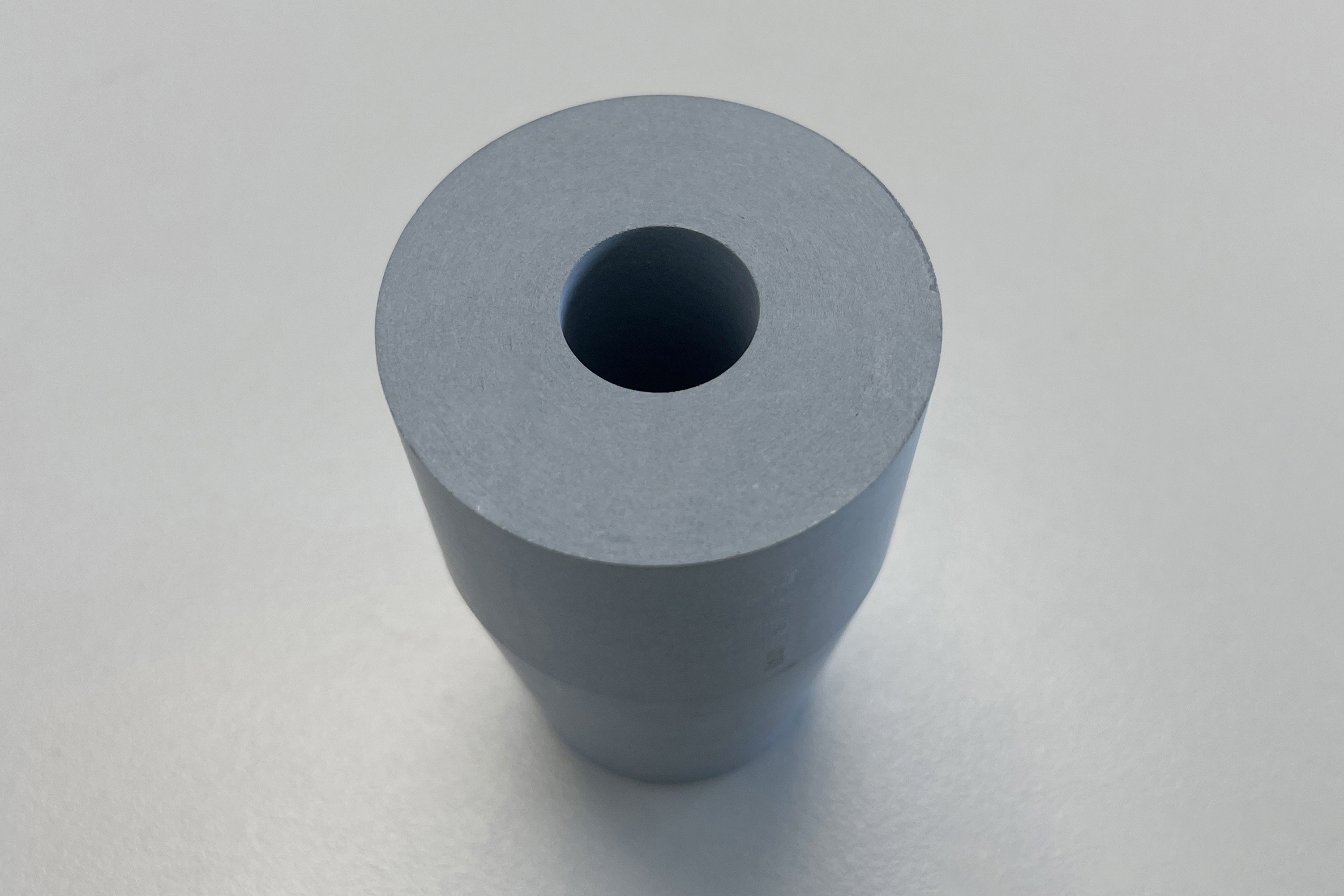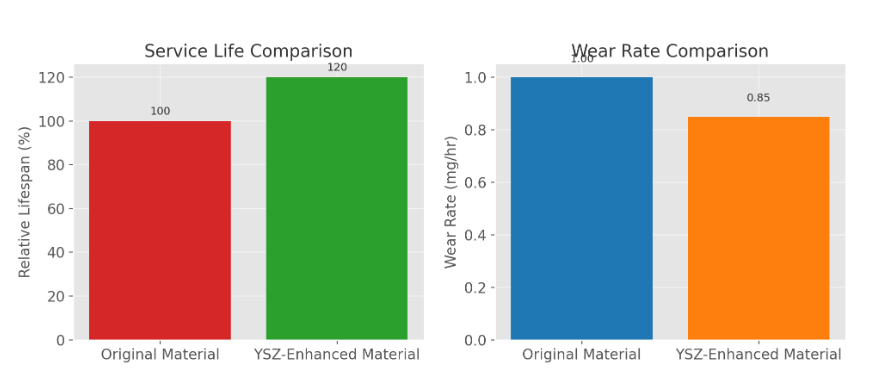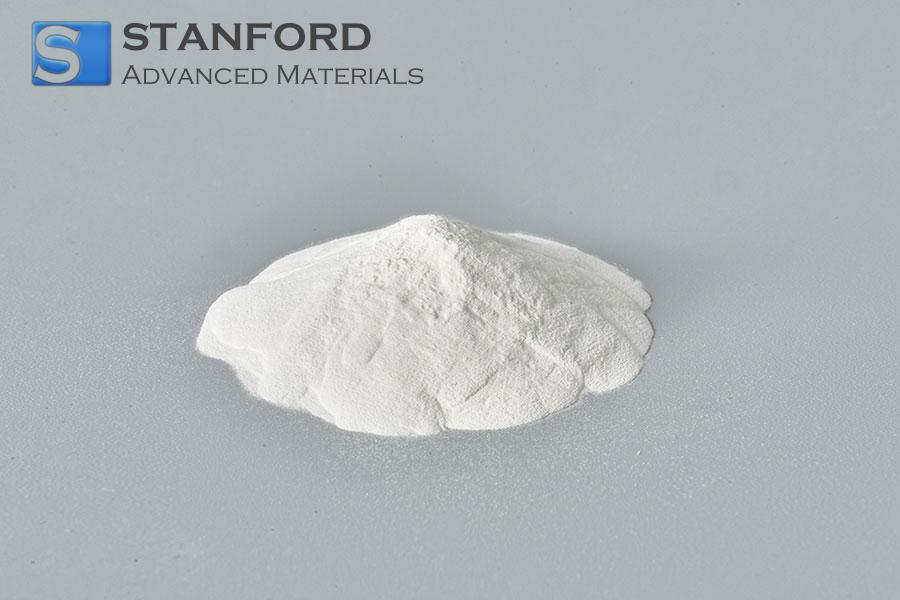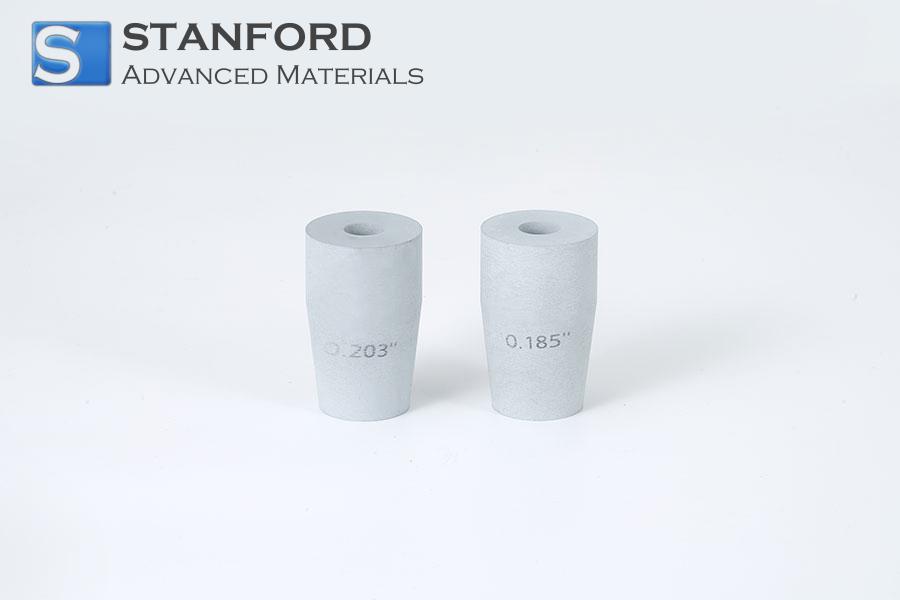Case Study: How YSZ Improved ZSBN Nozzle Durability
Introduction
This case study describes how Stanford Advanced Materials (SAM) addressed a client's requirement for extended operating hours of ZSBN nozzles in high-temperature and high-wear conditions. Adjustments were made to both the ceramic formulation and forming parameters, thereby improving resistance to abrasion and reducing thermal degradation without materially affecting cost.
Background
ZSBN (Zirconia Strengthened Boron Nitride) nozzles are extensively employed in thermal spray, molten metal handling and other industrial processes where elevated temperatures and abrasive conditions persist. One client reported that nozzles produced with standard ZrO₂‐reinforced BN did not meet the required service life. Failures occurred at operating temperatures exceeding 1 000 °C in systems using fast-moving abrasive media. Frequent replacements resulted in increased downtime and maintenance expenditure.
The client initially utilised a formulation with unstabilised zirconia. The objective was to enhance durability under cyclical thermal and mechanical loads encountered during regular operation.
Core Challenge
The primary issue involved premature wear and thermal cracking of the nozzle material. Although the BN matrix provides lubricity and thermal resistance, the original additive system did not deliver adequate phase stability or mechanical toughness at elevated temperatures. A reinforcement phase with improved high-temperature behaviour was required, provided that brittleness was not introduced and machinability remained acceptable.
Evaluated Solutions
Option 1: Retain original zirconia additive, adjust pressing process
-
Pros: Limited modifications to raw material sourcing and the firing schedule.
-
Cons: Only modest improvements in thermal endurance and wear resistance were achievable.
Option 2: Replace with yttria-stabilised zirconia (YSZ)
-
Pros: Enhanced phase stability above 1 000 °C, improved wear resistance and increased grain boundary integrity.
-
Cons: A slightly higher material cost and modified mixing and sintering protocols are required.
Option 3: Apply protective coatings to the nozzle surface
-
Pros: Provides a surface-level barrier to abrasion.
-
Cons: Involves a complex manufacturing process; the coating may delaminate at high temperatures and increases production costs.
Selected Approach: Option 2 – The standard zirconia was substituted with 3 mol% YSZ, accompanied by minor adjustments to the forming process.
Solution & Implementation
YSZ at 3 mol% was incorporated as the reinforcement phase within the BN matrix. YSZ maintained phase stability above 1 000 °C and contributed to retarding crack propagation under load. In addition to the material substitution, the cold isostatic pressing (CIP) stage was modified as follows:
-
Pressing time: The hold time was increased from 30 s to 60 s.
-
Powder feedstock: A higher-density YSZ-BN composite powder blend was employed.
-
Sintering: The original sintering schedule was maintained to control energy costs.
These modifications yielded improved green density and a more consistent sintered microstructure.
"Measured modifications included improved particle packing, utilisation of a more stabilised reinforcing phase and closer control during forming. Subsequent testing indicated measurable performance enhancements," said Lisa Ross, Senior Ceramics Engineer at SAM.
Results & Feedback
Performance Metrics
| Property | Original Nozzle | Optimised Nozzle | Improvement |
|---|---|---|---|
| Wear resistance (relative) | 100% (baseline) | Approximately 112–115% | +10–15% |
| Thermal stability (>1 000 °C) | Moderate | High | Significantly enhanced |
| Service life in application | Approximately 40 operating hours | Approximately 48–50 operating hours | +20–25% |
Client Feedback
The client reported a 20–25% increase in nozzle service life under consistent operating conditions. Maintenance intervals were extended and unplanned downtime was reduced. The revised formulation has been approved for implementation on two further production lines.
"The upgraded nozzles have resulted in a stabilised spray system and reduced unplanned stops. The performance data clearly reflect these improvements." – Client production manager
Recommendations & Future Work
-
Adopt the YSZ-based formulation for production nozzles
-
Continue monitoring long-term performance under varied load cycles
-
Examine the impact of sintering temperature optimisation in future batches
SAM will maintain collaboration with the client to refine material properties as required and to provide technical support during the scale-up of the enhanced nozzles.
Conclusion
This project demonstrates that targeted material substitutions combined with defined forming adjustments can yield quantifiable durability improvements. By substituting conventional zirconia with YSZ and increasing the pressing hold time, Stanford Advanced Materials (SAM) has improved both the thermal and mechanical performance of the ZSBN nozzle system.
The revised nozzles deliver extended service life, improved resistance to demanding process conditions and a reduction in total ownership costs for the client. Have any questions or require further details on your specific needs? Send us an enquiry to receive technical solutions and guidance.

 Bars
Bars
 Beads & Spheres
Beads & Spheres
 Bolts & Nuts
Bolts & Nuts
 Crucibles
Crucibles
 Discs
Discs
 Fibers & Fabrics
Fibers & Fabrics
 Films
Films
 Flake
Flake
 Foams
Foams
 Foil
Foil
 Granules
Granules
 Honeycombs
Honeycombs
 Ink
Ink
 Laminate
Laminate
 Lumps
Lumps
 Meshes
Meshes
 Metallised Film
Metallised Film
 Plate
Plate
 Powders
Powders
 Rod
Rod
 Sheets
Sheets
 Single Crystals
Single Crystals
 Sputtering Target
Sputtering Target
 Tubes
Tubes
 Washer
Washer
 Wires
Wires
 Converters & Calculators
Converters & Calculators
 Write for Us
Write for Us




 Chin Trento
Chin Trento



